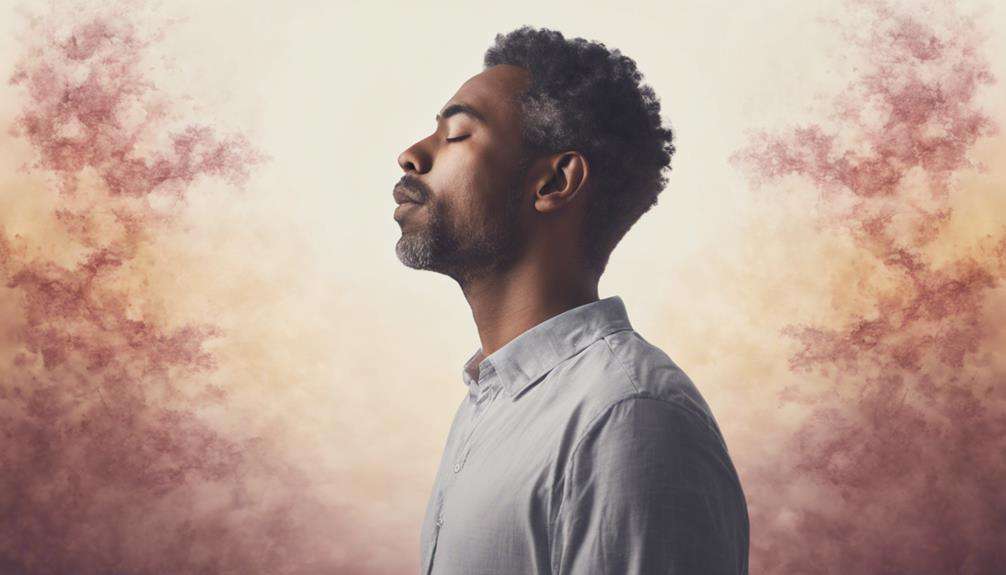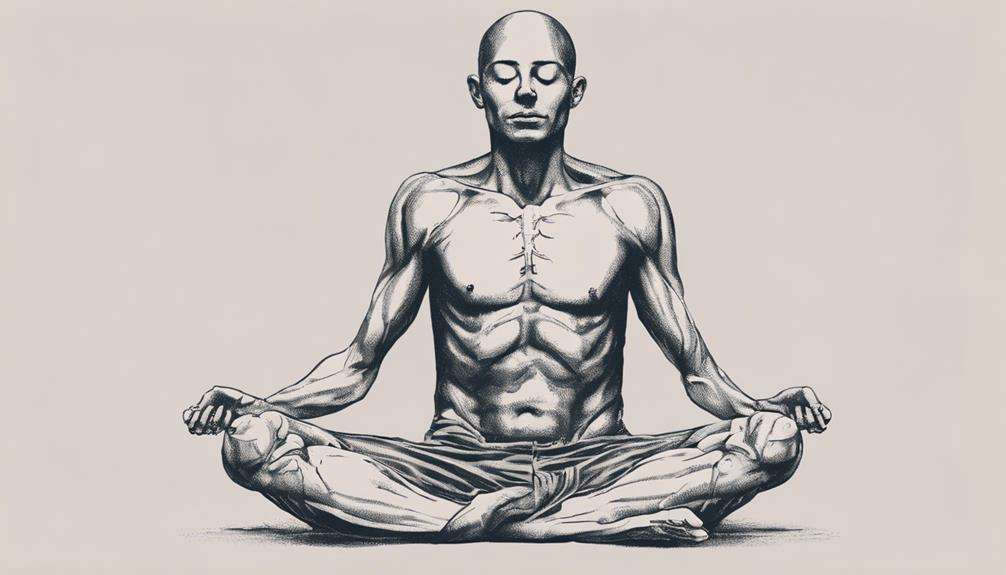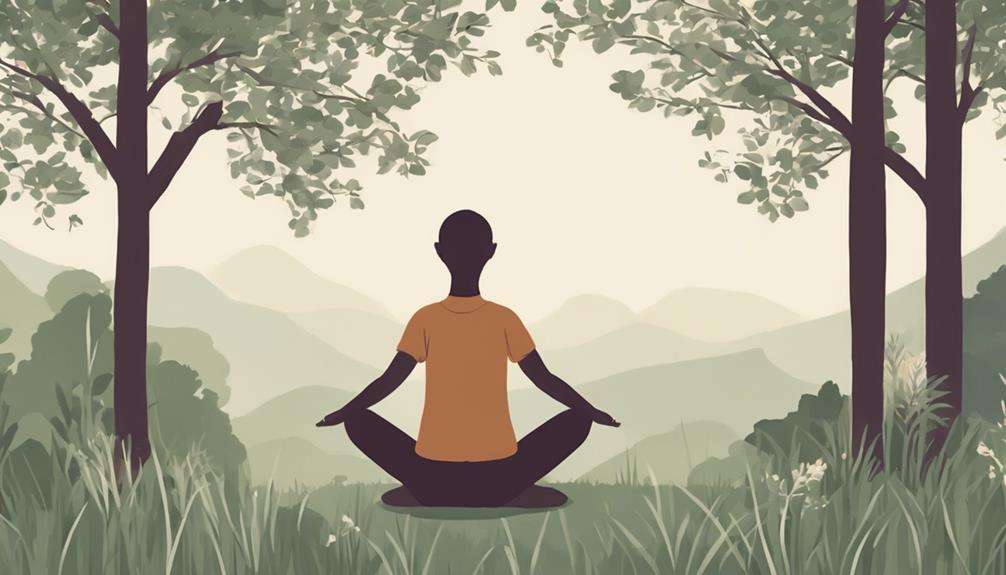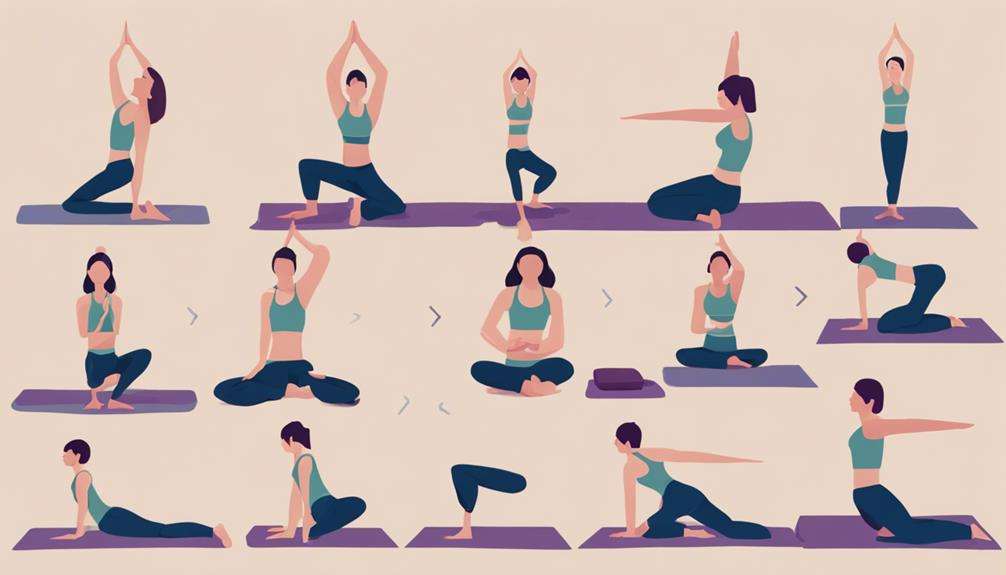Imagine your mind as a turbulent ocean, with waves crashing and thoughts swirling uncontrollably. Now, picture how a gentle breeze can gradually calm the waters, bringing tranquility and clarity.
Just like that breeze, mindful breathing techniques can help you find peace amidst life's chaos. These practices offer a doorway to inner harmony and energy, allowing you to tap into a wellspring of wellness waiting within.
Key Takeaways
- Enhance self-awareness and calmness through mindful breathing techniques.
- Regulate breath cycles for concentration, relaxation, and reduced anxiety.
- Deep breathing stimulates relaxation and stress relief mechanisms.
- Boost energy levels and mental clarity with energizing breathing practices.
Mindful Breathing Techniques
To enhance your self-awareness and promote calmness, practicing mindful breathing techniques can be a pivotal tool. When it comes to managing stress and improving overall health, deep breathing techniques like diaphragmatic breathing play a pivotal role. By focusing on breathing from your belly rather than shallow chest breathing, you activate the diaphragm, which helps reduce stress and improve heart rate variability.
Mindful breathing, a form of deep breathing, is particularly effective for stress reduction. By concentrating on your breath and being present in the moment, you can calm your mind and body, promoting a sense of peace and tranquility. This type of breathing can be done anywhere, anytime, making it a convenient tool for managing stress in daily life.
Counting Breaths
Shifting from mindful breathing techniques, counting breaths involves focusing on the inhalation and exhalation cycles, aiding in maintaining concentration and mindfulness during the breathing process. By counting your breaths, you can regulate the rhythm of your breath, bringing a sense of calm and awareness to your mind and body.
Here are some ways counting breaths can help you:
- Regulate your breathing patterns effectively.
- Reduce anxiety levels and promote relaxation.
- Enhance mental clarity and focus throughout the day.
- Improve blood circulation by bringing oxygen deep into the lungs.
- Place your hand on your chest to feel the rise and fall with each breath.
Counting breaths is a powerful tool that can be incorporated into your daily routine to manage stress and cultivate a sense of inner peace. So, take a moment, inhale deeply, and begin counting your breaths.
Deep Breathing

Deep breathing, a crucial practice for enhancing relaxation and mental clarity, involves increasing oxygen supply to the brain. By engaging in deep breathing exercises, such as belly breathing, you can stimulate the parasympathetic nervous system (PNS), which helps activate the body's relaxation response. This leads to a decrease in stress levels and an overall improvement in both mental and physical health.
When you take deep breaths, you aren't only oxygenating your brain but also reducing muscle tension, promoting a sense of calmness and well-being. Focusing on breath work can maximize heart rate variability by first filling your belly with air before your lungs, allowing for a more profound relaxation response. Regular practice of deep breathing can help cool your body, calm your mind, and alleviate feelings of stress and anxiety. Embrace the power of deep breathing to nurture vitality and wellness in your daily life.
2-4 Breathing
As you explore the domain of mindfulness, tuning into your breath can serve as a grounding anchor for your present moment awareness. Focusing on your breathing patterns, whether shallow or deep, can have profound effects on your overall well-being. Here are some key points to contemplate:
- Engaging in belly breathing activates the parasympathetic nervous system (PNS), promoting relaxation and reducing stress levels.
- Deep breathing techniques encourage coherent breathing, synchronizing your inhales and exhales for a calming effect.
- Slow, deliberate breaths facilitate emotional regulation, helping you navigate challenging situations with clarity and composure.
- Diaphragmatic breathing not only enhances oxygen intake but also supports a sense of mental clarity and focus.
- Incorporating mindful breathing practices into your daily routine can lead to significant health benefits, such as lowered anxiety levels and improved emotional resilience.
Energizing Breaths

Invigorate your mind and body with energizing breaths, a practice rooted in Kundalini yoga segmented breathing to boost your energy levels and enhance alertness. These breathing practices are designed to revitalize you, making them particularly effective when you're feeling sluggish or in need of a pick-me-up. By focusing on specific breathing patterns, energizing breaths serve as a powerful tool to recharge your energy and increase vitality.
When you find yourself struggling with lethargy or fatigue, incorporating these breaths into your routine can help you overcome these feelings and maintain top energy levels throughout the day. Consistency is key, so practicing energizing breaths regularly won't only uplift your spirits but also make sure that you're operating at your best.
Embrace this technique to invigorate your body, sharpen your mind, and conquer the challenges of the day with renewed vigor.
Frequently Asked Questions
What Are the 5 Main Breathing Techniques?
For deep breathing and relaxation exercises, explore various techniques like diaphragmatic breathing, box breathing, 4-7-8 breathing, counted breathing, and body scan meditation. These breathwork benefits enhance the mind-body connection, offering stress relief, energy renewal, calmness, essentiality, and wellness practices.
What Is the 4 7 8 4 Breathing Technique?
When life feels overwhelming, try the 4 7 8 breathing technique. Inhale for 4, hold for 7, exhale for 8. This calming breath triggers your relaxation response, reduces anxiety, and boosts energy. Practice for stress relief and mental clarity.
What Are 3 Examples of What Mindful Breathing Can Do for the Body?
When you practice mindful breathing, your body experiences stress reduction, improved focus, and an energy boost. This creates a relaxation response, supports your immune system, and enhances mental clarity. Your emotional balance and physical rejuvenation improve too.
What Are the Five Mindful Breaths?
Take deep breaths to activate your relaxation response, connecting mind and body. This practice relieves stress, boosts energy, enhances focus, regulates emotions, calms your mind, and brings physical and mental benefits, like clarity and essentiality.
Conclusion
As you practice these mindful breathing techniques, you'll release the power within you to breathe new life into your vitality and wellness.
Like a gentle breeze on a warm summer day, these techniques will sweep away stress and bring a sense of calmness and clarity to your mind.
Embrace the power of your breath, and watch as your energy levels soar and your well-being flourishes.
You hold the key to a healthier, more vibrant life within your own breath.






